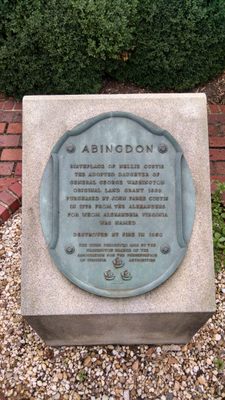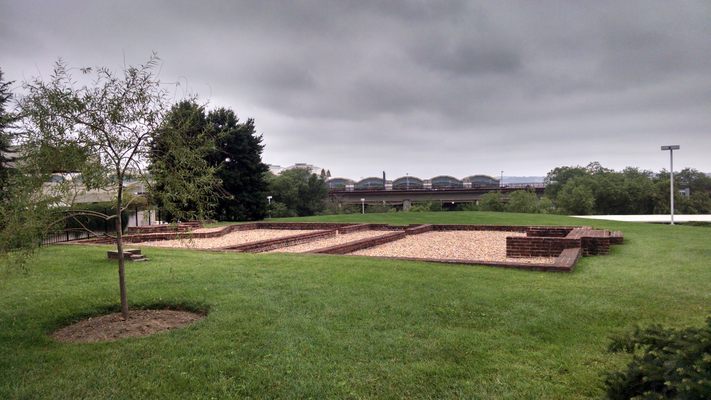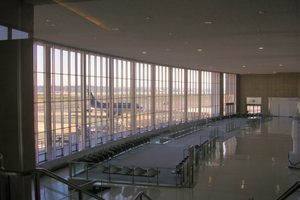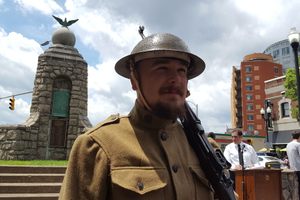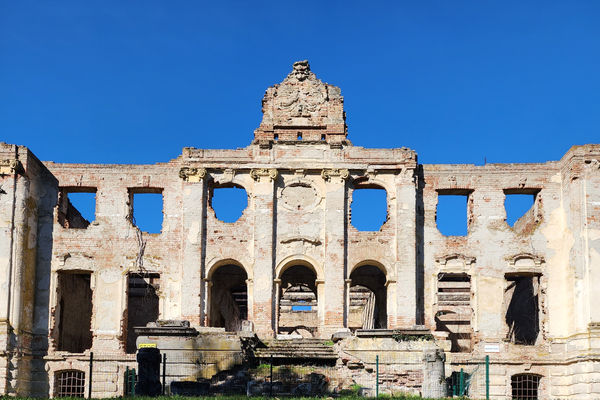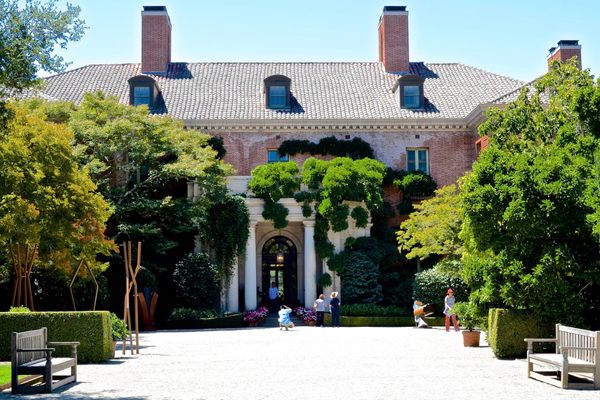About
A bustling international airport may seem like an unlikely place to find a Revolutionary War era plantation, but there it is, located just a few hundred feet from the North Terminal at Reagan National Airport. On top of a grassy hill with views down the Potomac, a set of brick ruins marks the spot of the historic Abingdon plantation.
Abingdon was built in 1695 by the Alexander family, whose name was later conveyed to the nearby port town that we know today as Alexandria. Years later, George Washington’s adopted stepson, John, purchased the house so that he could live closer to the Washingtons' home at Mount Vernon.
The property later reverted to the Alexander descendants, named Hunter, up until the Civil War when the confederate sympathizers fled south. Like the nearby Custis Lee Mansion (today, Arlington National Cemetery), Union troops took the property over and made camp on the lawns. After the war, the Hunters returned and successfully sued the government for rights to Abingdon. The lawyer, incidentally, was James Garfield, the future president of the United States.
Alexander Hunter Jr later recalled the property in his 1904 book Johnny Reb and Billy Yank:
“We lived on a splendid estate of 650 acres, lying on the Potomac, between Alexandria and Washington. I doubt whether in the whole Southland there had existed a finer country seat; the house was built solidly, as if to defy time itself, with its beautiful trees, fine orchards, its terraced lawns, graveled walks leading to the river a quarter of a mile away; the splendid barns, the stables with fine horses (for which my father, a retired naval officer, had a special fondness), the servants quarters, where dwelt the old family retainers and their offspring, some fifty or more.”
Absent from Hunter’s description (and from contemporary historical plaques) is any mention of the enslaved people that surely also lived and worked at Abingdon.
The mansion itself burned down under suspicious circumstances in 1930. It was possibly an act of arson—the RF&P Railroad wanted to build on the site, and had previously “invited employees to strip the house” in order to “save demolition costs,” according to the Washington Post.
The ruins of Abingdon then sat abandoned for 11 years until Washington National Airport was built on landfill just north of the site. The airport’s continued expansion over the years again threatened Abingdon. In 1990, the Washington Metropolitan Airports Authority proposed bulldozing the fenced-off site to make way for a new parking garage. A vigorous preservation campaign played out in the city’s newspapers, and the ruins of Abingdon reopened in 1998 as a little park. Go take a look the next time you’ve got a few hours to kill at National Airport.
Related Tags
Know Before You Go
The route is circuitous and not very well marked. Best ask directions from an airport employee.
Community Contributors
Added By
Edited By
Published
May 1, 2017
Sources
- Of Our Irreplaceable Past, Washington Post, 22 Apr 1990
- Airport Debate Amid the Ruins, Washington Post, 04 Jan 1990
- National Park Service Interpretive Plaques
- Wikipedia article: Abindon (plantation)
- Wikipedia: Apiongdon (plantation) (https://en.wikipedia.org/wiki/Abingdon_(plantation))
- Wikipedia article: Abingdon Plantation (https://en.wikipedia.org/wiki/Abingdon_(plantation))







